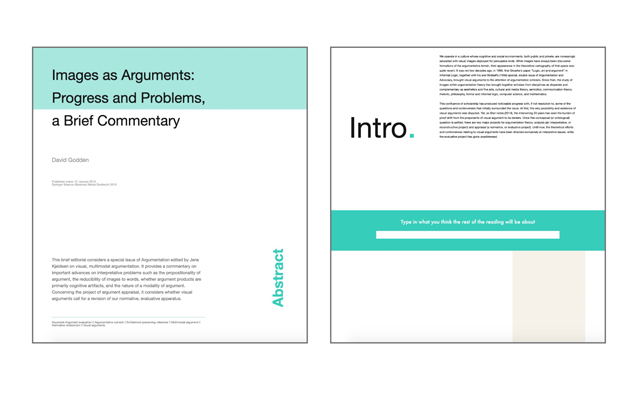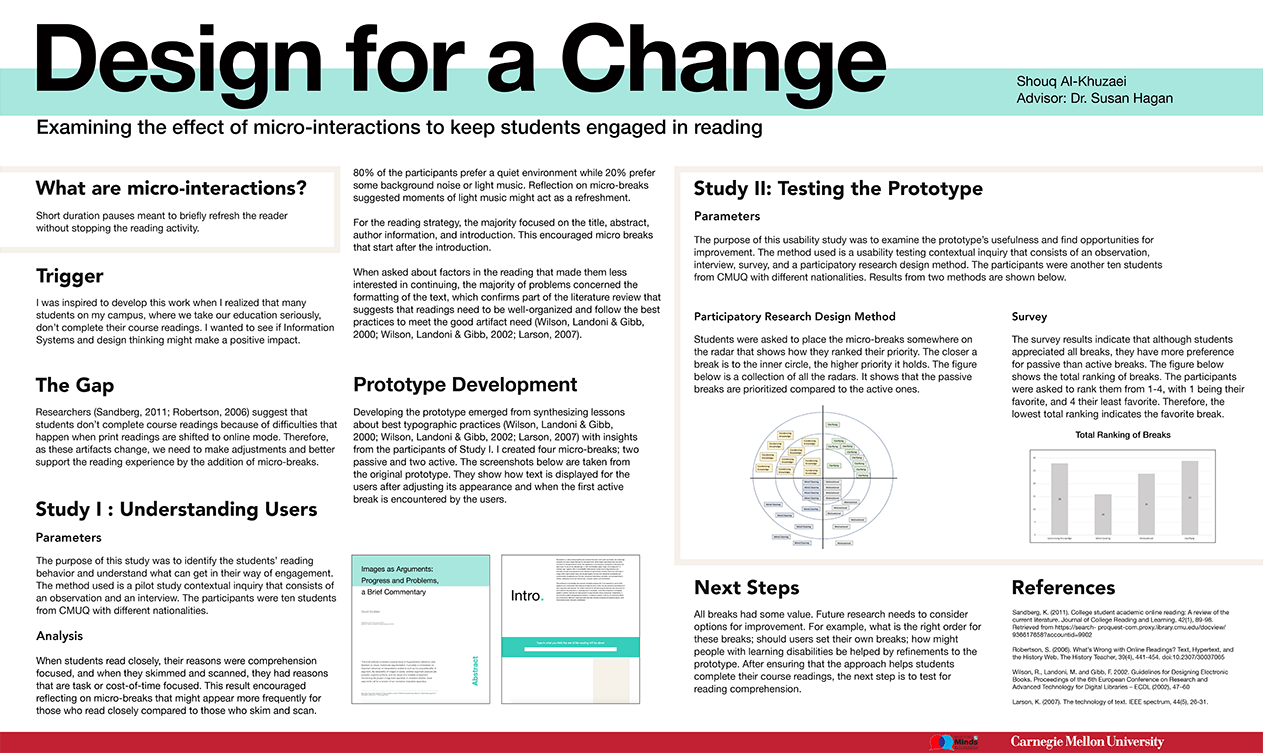This research focuses on ways to engage students in course readings, which too often are not completed (Baier, Hendricks, Gordon, Hendricks, Cochran, 2011). As a result, students’ growth is hindered, preventing them from learning effectively. Because Covid 19 has moved reading more rapidly toward online formats, this study limits media to electronic options. Although research has considered ways to improve electronic books, including the effective use of web design and the addition of audiovisual enrichments, none have considered the potential in intermittent micro-interactions, which I call micro-breaks, as a way to maintain engagement. Henning et al. (1997), who points out to the value of taking frequent short breaks from continuous computer-mediated work has proven that these breaks have been effective in increasing productivity and improving well-being. Therefore, I posit that the use of these much smaller breaks can refresh a user’s interest throughout reading. Online micro-breaks include those that invite the user to briefly disengage from the text, those that encourage the user, or those that ask the user to memorialize their thoughts on an earlier section of the text, so that they can re-engage with the remaining material. Each break adds touch to an experience driven by sight.



